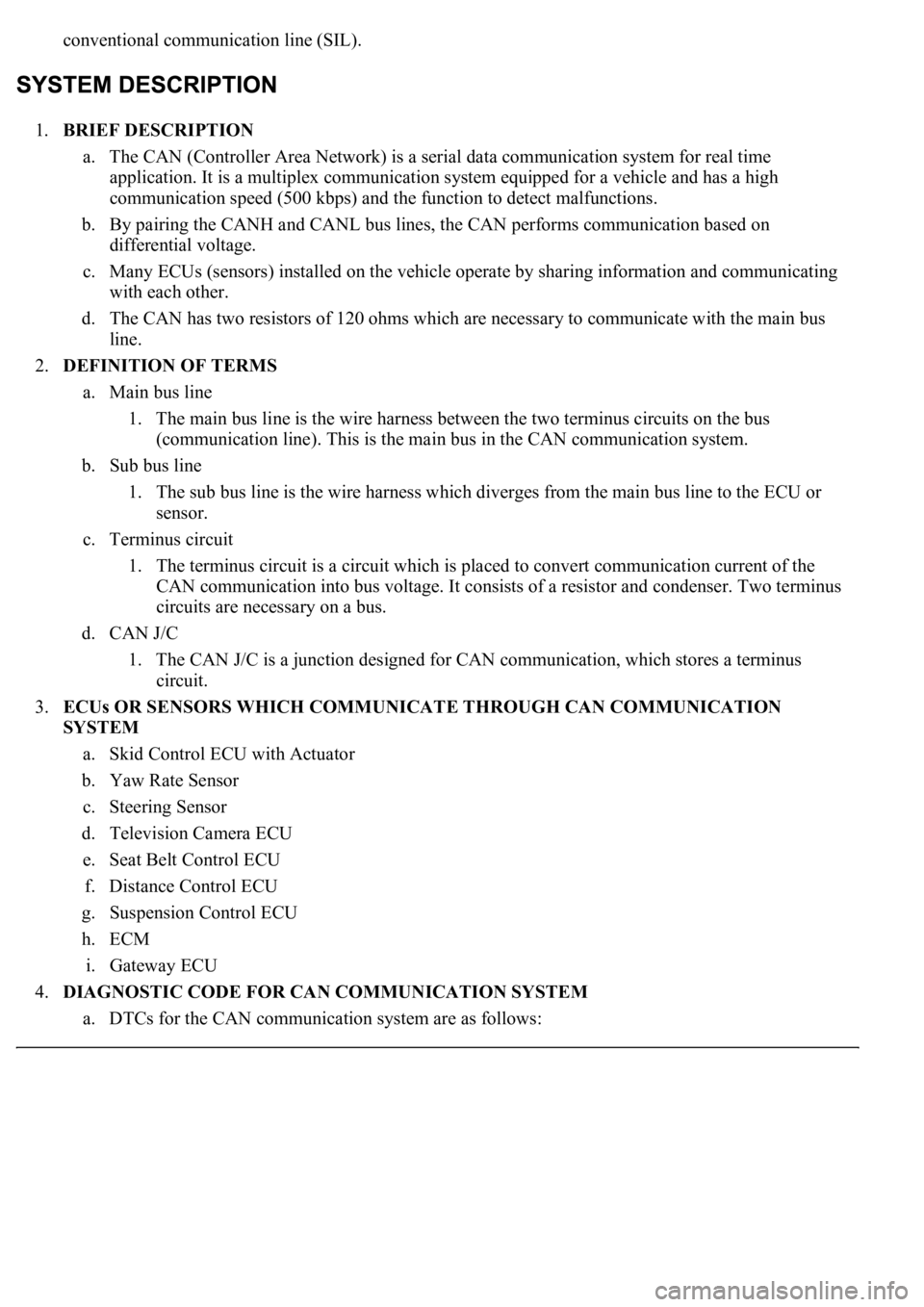Page 258 of 4500
Temperature Sensor)Thermistor)
Courtesy of TOYOTA MOTOR SALES, U.S.A., INC.
OK: REPLACE AIR CONDITIONING AMPLIFIER (SEE REPLACEMENT
)
CIRCUIT DESCRIPTION
The sensor connected to the ECM detects fluctuations in the ambient temperature that is used for controlling the
interior temperature. The sensor sends a signal to the A/C amplifier via the ECM.
Fig. 41: DTC Detection Item Trouble Area Chart
Courtesy of TOYOTA MOTOR SALES, U.S.A., INC.
WIRING DIAGRAM
Page 260 of 4500
Result:
AIR CONDITIONER TEST RESULT
B: PROCEED TO NEXT CIRCUIT INSPECTION SHOWN IN PROBLEM SYMPTOMS TABLE
C: REPLACE AIR CONDITIONING AMPLIFIER (SEE REPLACEMENT )
A
2.INSPECT ECM (TAM - E2)
Fig. 43: ECM Connector Wire Harness View
Courtesy of TOYOTA MOTOR SALES, U.S.A., INC.
a. Remove the ECM with connectors still connected.
b. Turn the ignition switch to the ON position.
c. Measure the voltage according to the value (s) in the table below.
Standard:
ECM (TAM - E2) VOLTAGE
HINT:
As the temperature increases, the voltage decreases.
Result:
NGA
OK (Checking from the PROBLEM SYMPTOM TABLE)B
OK (Checking from the DTC)C
Tester connectionConditionSpecified condition
E3-18 (TAM) - E5-28 (E2)Ignition switch ON at 25°C (77°F)2.0 +/- 0.2V
E3-18 (TAM) - E5-28 (E2)Ignition switch ON at 40°C (104°F)1.4 +/- 0.2 V
Page 261 of 4500
ECM (TAM - E2) TEST RESULT
B: PROCEED TO NEXT CIRCUIT INSPECTION SHOWN IN PROBLEM SYMPTOMS TABLE
C: REPLACE ECM (SEE REPLACEMENT )
A: Go to next step
3.INSPECT A/C AMBIENT TEMPERATURE SENSOR
a. Remove the A/C ambient temperature sensor.
b. Measure the resistance according to the value (s) in the table below.
Fig. 44: Identifying Terminals Of A/C Ambient Temperature Sensor Connector
Courtesy of TOYOTA MOTOR SALES, U.S.A., INC.
NGA
OK (Checking from the PROBLEM SYMPTOM TABLE)B
OK (Checking from the DTC)C
Page 263 of 4500
Courtesy of TOYOTA MOTOR SALES, U.S.A., INC.
NG: REPLACE A/C AMBIENT TEMPERATURE SENSOR
OK: Go to next step
4.CHECK HARNESS AND CONNECTOR (ECM-A/C AMBIENT TEMPERATURE SENSOR)
(SEE ELECTRONIC CIRCUIT INSPECTION PROCEDURE
)
a. Measure the resistance according to the value (s) in the table below.
Standard:
ECM-A/C AMBIENT TEMPERATURE SENSOR RESISTANCE
NG: REPAIR OR REPLACE HARNESS OR CONNECTOR
Tester connectionConditionSpecified condition
E3-18 (TAM) - A1-1AlwaysBelow 1 ohms
E5-28 (E2) - A1-2AlwaysBelow 1 ohms
E3-18 (TAM) - Body groundAlways10 kohms or higher
E5-28 (E2) - Body groundAlways10 kohms or higher
Page 264 of 4500
Fig. 46: Checking Harness And Connector (ECM-A/C Ambient Temperature Sensor)
Courtesy of TOYOTA MOTOR SALES, U.S.A., INC.
Page 265 of 4500
OK: REPLACE ECM (SEE REPLACEMENT)
CIRCUIT DESCRIPTION
This sensor detects the evaporator temperature and sends the appropriate signals to the A/C amplifier. It is used
for frost prevention, temperature and time-lag air flow control.
Fig. 47: DTC Detection Item Trouble Area Chart
Courtesy of TOYOTA MOTOR SALES, U.S.A., INC.
WIRING DIAGRAM
Fig. 48: Evaporator Temperature Sensor Circuit
Courtesy of TOYOTA MOTOR SALES, U.S.A., INC.
INSPECTION PROCEDURE
Page 1198 of 4500
Fig. 8: Wiring Diagram - Can Communication System (W/O LEXUS Navigation System)
Courtesy of TOYOTA MOTOR SALES, U.S.A., INC.
HINT:
The position of the terminus circuit differs in vehicles with and without the LEXUS navigation system.
The skid control ECU with actuator detects and stores steering sensor and yaw rate sensor DTCs and
performs DTC communication by receiving information from the steering sensor and yaw rate sensor.
The ECM detects and stores distance control ECU DTCs, and performs DTC communication by
receiving information from the distance control ECU.
The ECM uses the CAN communication system to perform DTC communication instead of the
Page 1199 of 4500

conventional communication line (SIL).
1.BRIEF DESCRIPTION
a. The CAN (Controller Area Network) is a serial data communication system for real time
application. It is a multiplex communication system equipped for a vehicle and has a high
communication speed (500 kbps) and the function to detect malfunctions.
b. By pairing the CANH and CANL bus lines, the CAN performs communication based on
differential voltage.
c. Many ECUs (sensors) installed on the vehicle operate by sharing information and communicating
with each other.
d. The CAN has two resistors of 120 ohms which are necessary to communicate with the main bus
line.
2.DEFINITION OF TERMS
a. Main bus line
1. The main bus line is the wire harness between the two terminus circuits on the bus
(communication line). This is the main bus in the CAN communication system.
b. Sub bus line
1. The sub bus line is the wire harness which diverges from the main bus line to the ECU or
sensor.
c. Terminus circuit
1. The terminus circuit is a circuit which is placed to convert communication current of the
CAN communication into bus voltage. It consists of a resistor and condenser. Two terminus
circuits are necessary on a bus.
d. CAN J/C
1. The CAN J/C is a junction designed for CAN communication, which stores a terminus
circuit.
3.ECUs OR SENSORS WHICH COMMUNICATE THROUGH CAN COMMUNICATION
SYSTEM
a. Skid Control ECU with Actuator
b. Yaw Rate Sensor
c. Steering Sensor
d. Television Camera ECU
e. Seat Belt Control ECU
f. Distance Control ECU
g. Suspension Control ECU
h. ECM
i. Gateway ECU
4.DIAGNOSTIC CODE FOR CAN COMMUNICATION SYSTEM
a. DTCs for the CAN communication system are as follows: